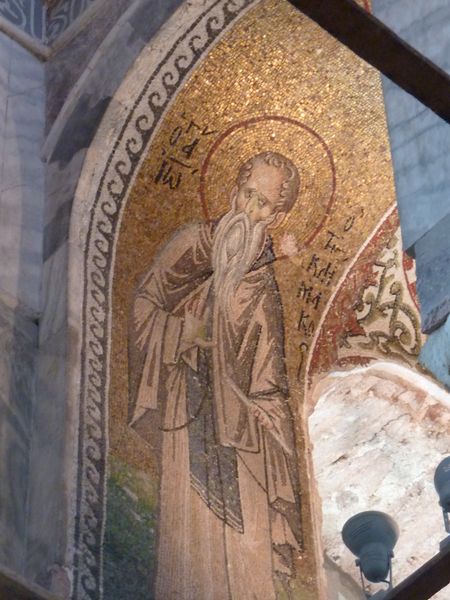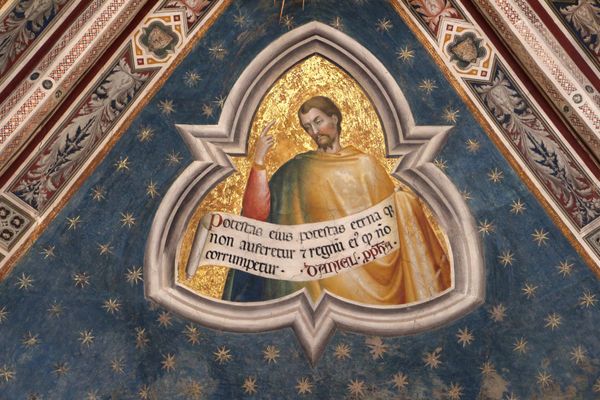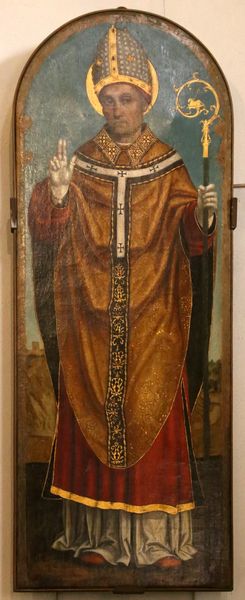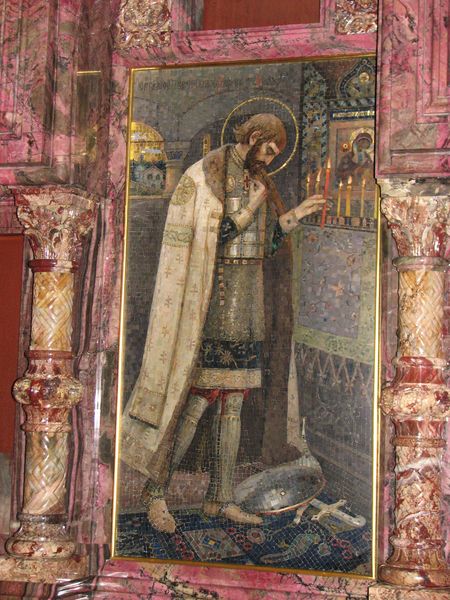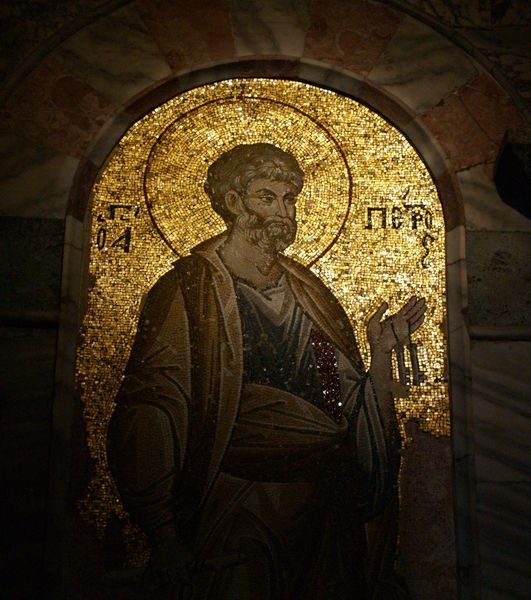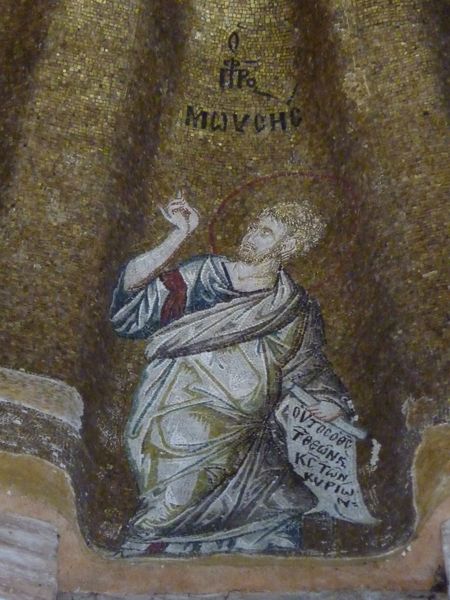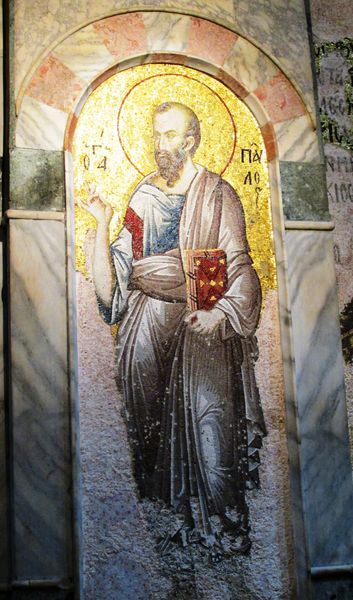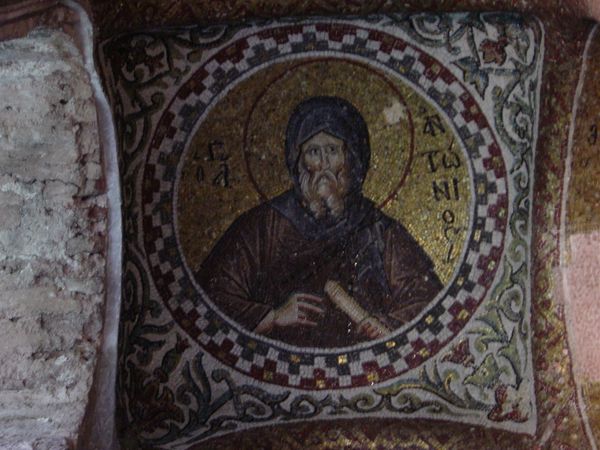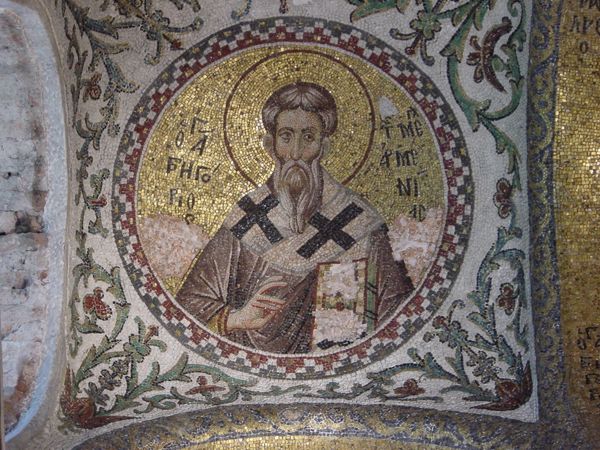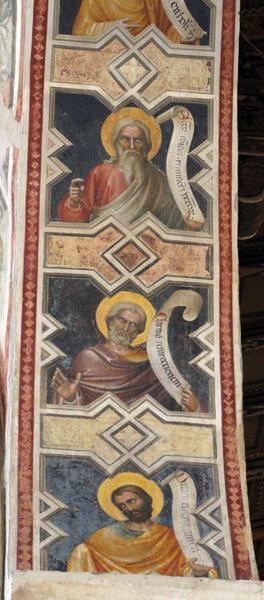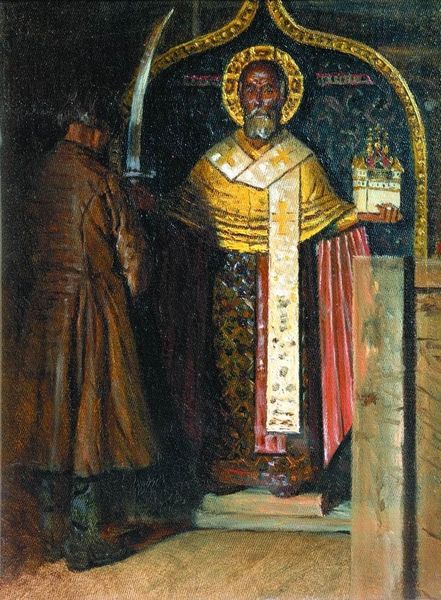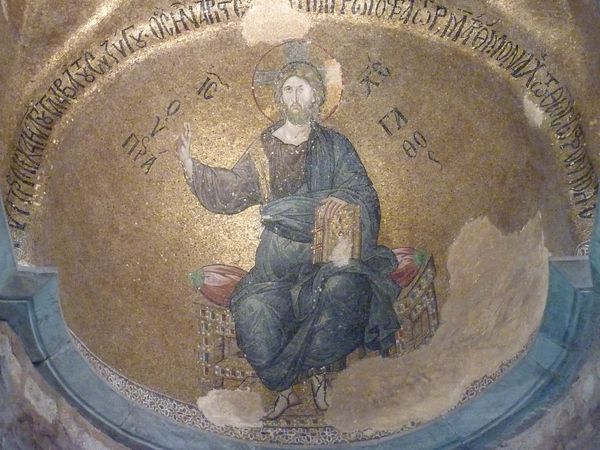
mosaic
#
portrait
#
mosaic
#
byzantine-art
#
medieval
#
holy-places
#
figuration
#
historic architecture
#
historical font
#
historical building
Copyright: Public domain
Editor: So, this mosaic, called "A Bishop," dates back to around 1300, and it's found in the Pammakaristos Church in Istanbul. It’s really stunning – all those tiny tiles! I'm struck by how imposing he looks. What do you see in this piece? Curator: I see layers upon layers of meaning encoded in this image. Consider the use of tesserae, the individual tiles. They create a shimmering effect, an almost otherworldly light, immediately associating the bishop with the divine. The patterning of his robe, those crosses, it’s a visual language constantly reinforcing his spiritual authority. Editor: So the crosses aren't just decoration? Curator: Not at all! They declare his allegiance. Look at the architectural setting too. This mosaic wasn't created in a vacuum. The building itself, Pammakaristos Church, now the Fethiye Mosque, speaks volumes about the shifting powers and cultural memories embedded in this space. This Bishop, encased in glittering stone, persists as a testament to a former spiritual reign. And what of the halo, that perfect circle of light? A universal symbol of holiness. Editor: It’s like the artist is using visual cues to tell a whole story. The choice of materials, the setting… it all adds up. Curator: Precisely! It's about cultural continuity and how we use images to negotiate power, religion, and memory. Each tile is a deliberate act, creating an icon that transcends time. The survival of the work, through cultural shifts, adds further meaning. Editor: I guess I hadn’t considered how much the history *around* the art shapes how we see it. Thanks for highlighting that! Curator: My pleasure! Visual culture is a rich and evolving palimpsest. Keep looking, and it will keep speaking.
Comments
No comments
Be the first to comment and join the conversation on the ultimate creative platform.
